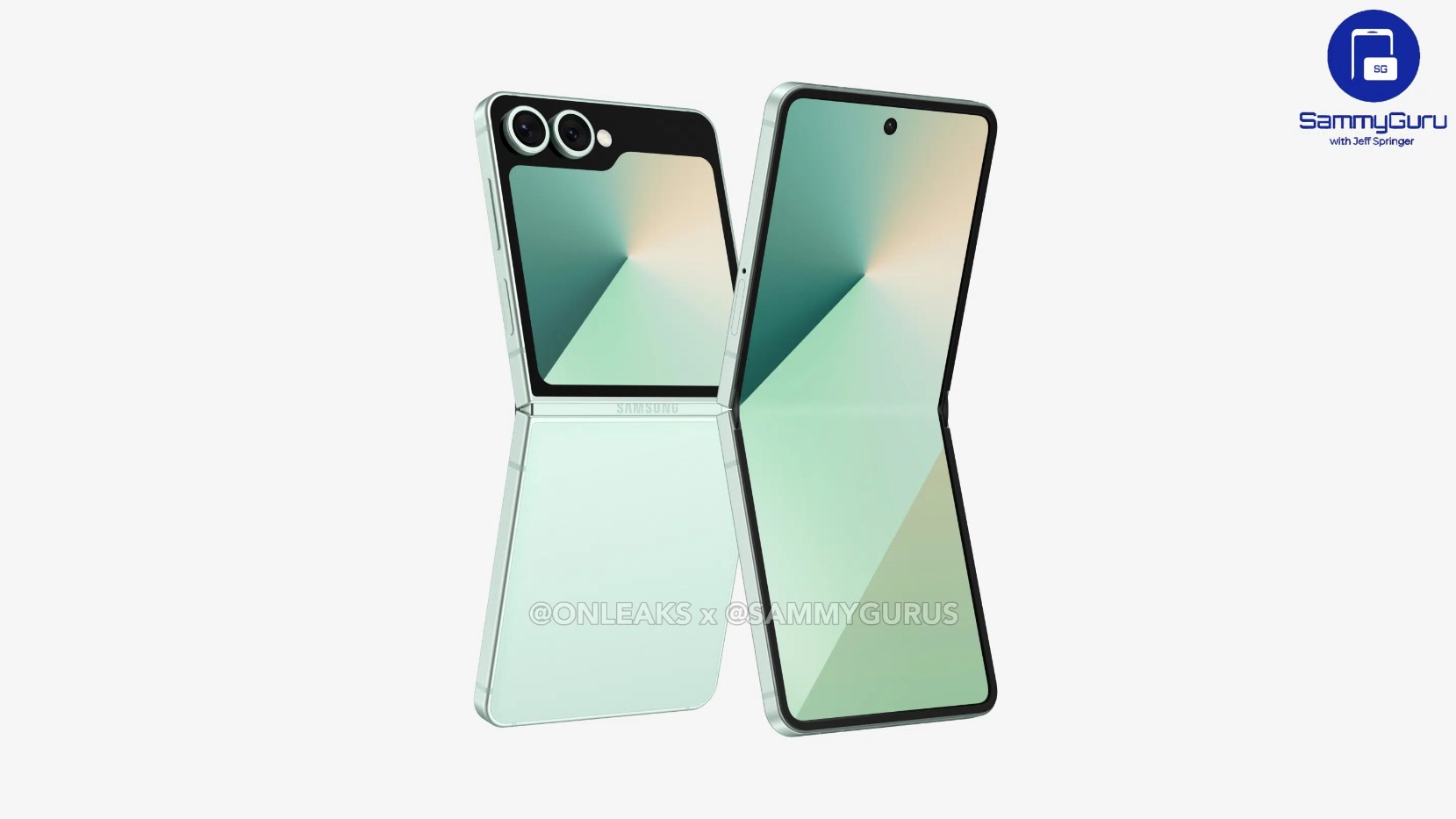Fitbit Sense 2 vs. Apple Watch SE 2 (2022)
Do Fitbit's health sensors make it more compelling than Apple's entry-level lifestyle watch?
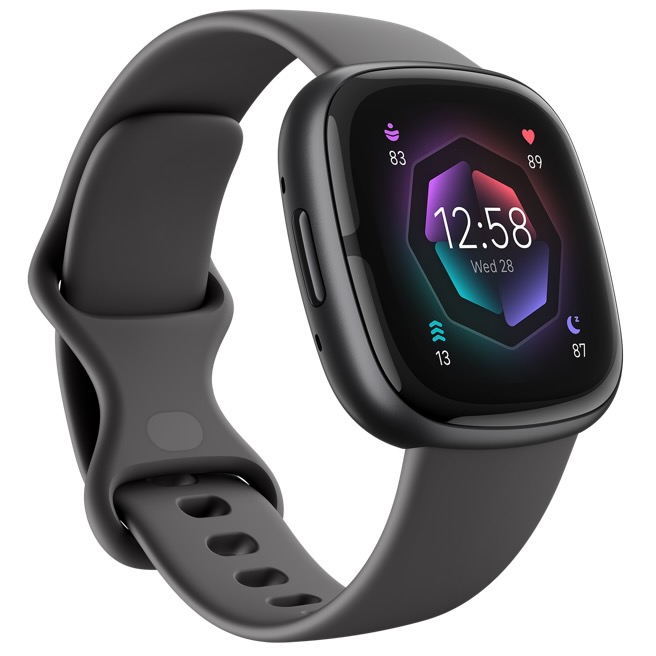
The Fitbit Sense 2 lives up to its name and senses everything going on with your body underneath the surface, from stress to heart rhythm, skin temperature to blood oxygen. It then takes that data and your workout data and gives you a picture of your current health. Outside of this, though, it's pretty limited.
For
- SpO2, cEDA, ECG, and skin temperature sensors
- Premium health reports and guided workouts
- 6-day battery life
- Stylish design
- iOS and Android support
Against
- No music storage
- No third-party apps
- No Google Assistant
- Fitbit Premium basically required
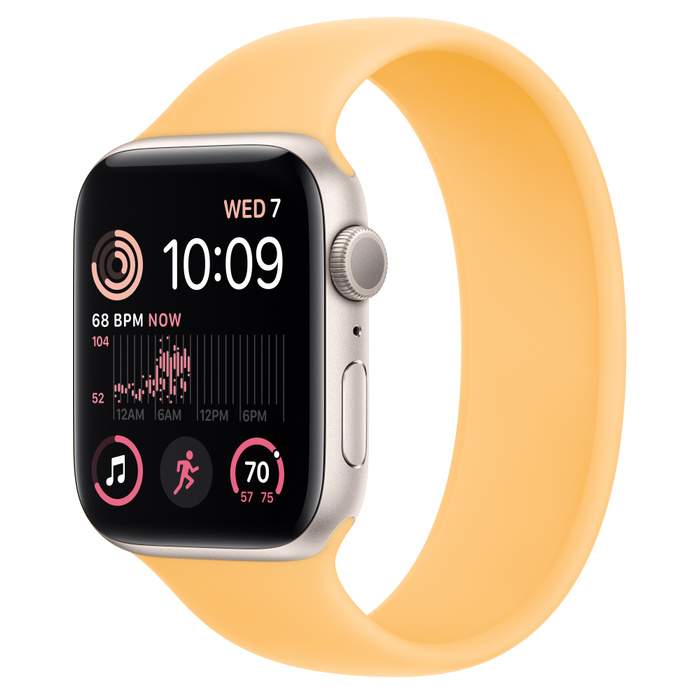
The affordable, barely downgraded sibling of the Series 8, the Apple Watch SE 2022 offers the classic watchOS experience of great software and poor battery life for a more reasonable price. Its lower price comes at the expense of specific health sensors that the Sense 2 offers, however.
For
- 40 and 44mm display options
- Lightweight and thin
- Same S8 chip as Series 8
- Apple Fitness+ is useful but optional
- Wi-Fi and LTE support
- Lower price
Against
- Only 18-hour battery life
- Slow charging time
- No blood oxygen, ECG, EDA, or temperature sensors
- iOS-only
The Apple Watch Series 8 is the most compelling option for most iPhone owners, but at $400-and-up it costs more than you might want. We wrote that the Sense 2 is a compelling option compared to the Series 8 despite its limitations, mainly due to the lower price. So we decided to follow up by weighing its merits against the more affordable Apple Watch SE, which cuts below the Sense 2 in price by pruning all the sensors that make the Sense 2 special.
So your decision between the Apple Watch SE 2 and Fitbit Sense 2 is straightforward: do you want a passive watch that sits on your wrist and measures tons of data or an active watch for using apps and responding to notifications?
Apple Watch SE 2 (2022) vs. Fitbit Sense 2: Design and display
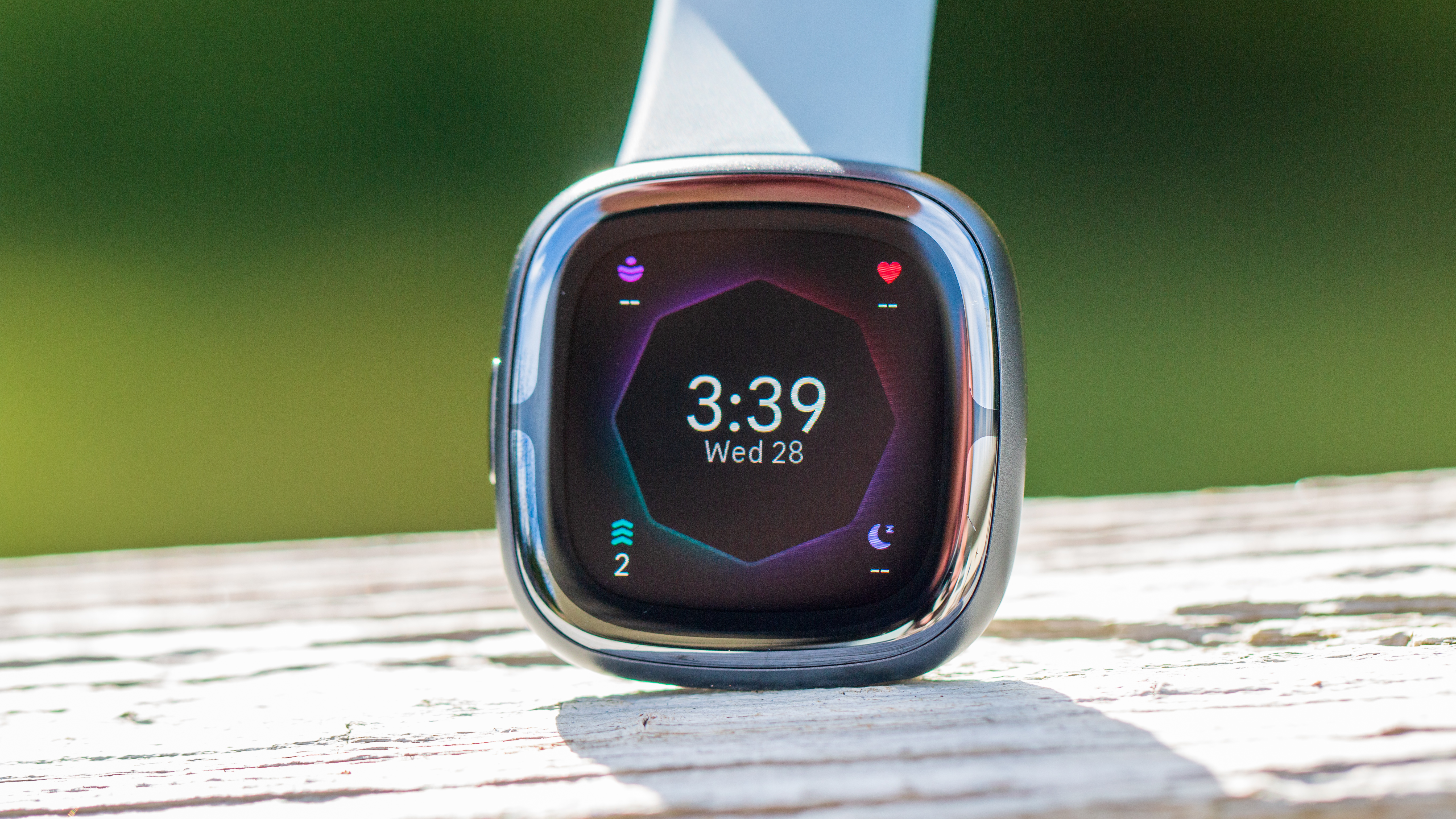
Before we dive into features, which of these watches will look better on your wrist? The Apple Watch SE 2 is essentially a smaller version of the Apple Watch Series 8, with 40 and 44mm displays instead of 41 and 45mm but otherwise mirroring it with its squircle design and digital crown. Its display is 30% larger than the Apple Watch Series 3, but does have slightly larger bezels than the Series 8.
The Fitbit Sense 2 has a very similar squircle look, but with just one 1.58-inch display option. The 1.57-inch Apple Watch SE 2 is a bit taller and has a few more pixels per inch, while only Apple offers a 1.78-inch option with the same PPI for just $30 more (or $20 less than the Sense 2).
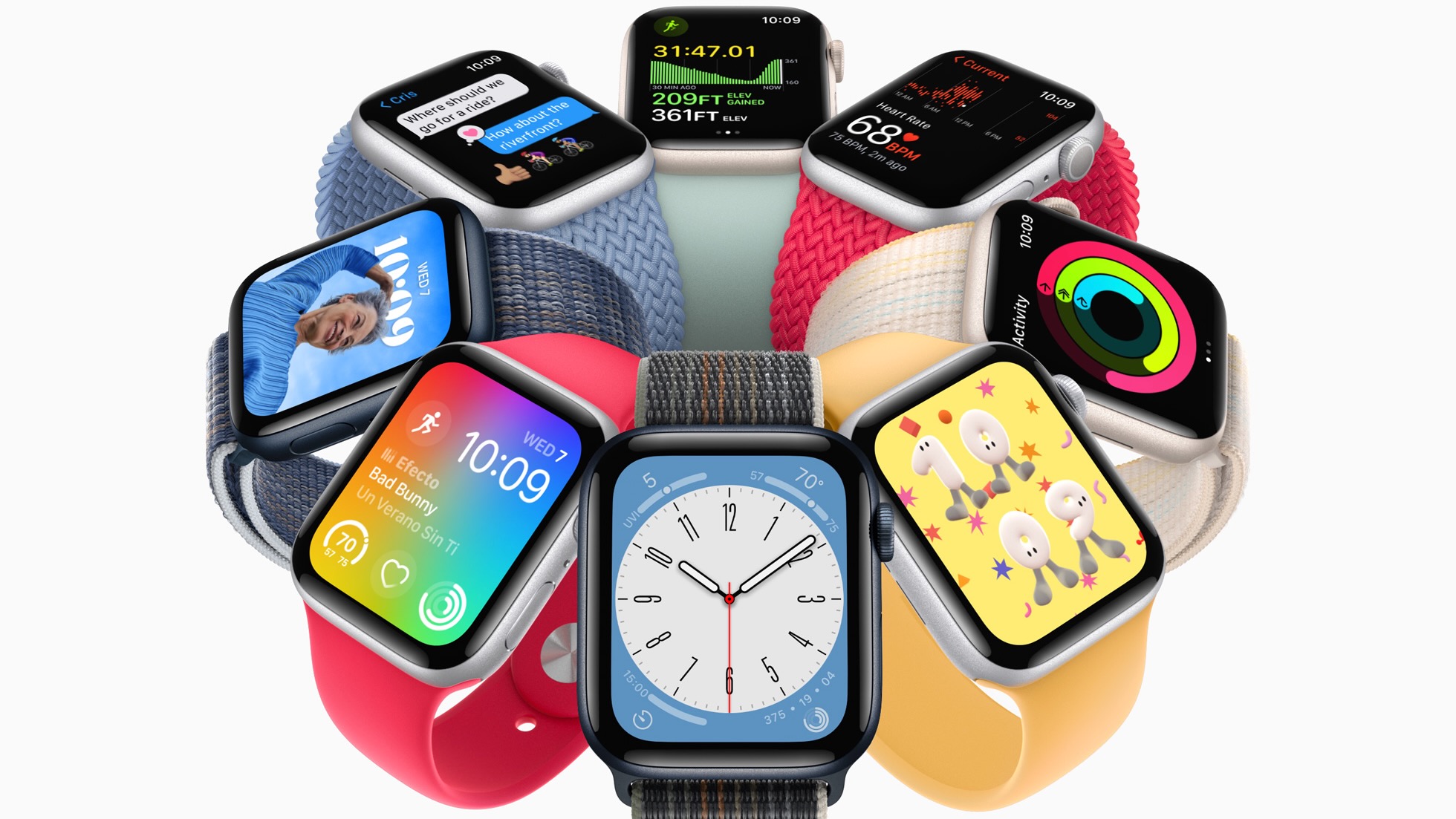
The Fitbit Sense 2 is decently skinny for a fitness watch at 11.2mm, with a redesigned flat bottom that helps the sensors rest more directly on your skin. It also ditched the unreliable capacitive touch button of the original Fitbit Sense for a physical back button, but you'll still mostly rely on the touchscreen for controls.
You get an even skinnier option in the 10.7mm Apple Watch SE 2022. It's the same width as the Series 8, but it weighs a few grams less, down to 27.8g/ 0.98oz without the strap. Considering the Solo Loop apparently weighs about 13g, the Apple Watch SE 2 will weigh just a couple of grams more than the 37.6g Sense 2, a rarity for a lifestyle watch with a powerful processor.
On the subject of bands, both watches use proprietary bands. Our colleagues at iMore wrote up the best Apple Watch bands, with a lot of third-party options due to the Apple Watch's popularity. But as you can see in our Fitbit Sense 2 bands round-up, it too has some third-party options to swap in.
Both watches have similar 50-meter water resistance protection, and Apple's Ion-X protection is pretty similar to the Gorilla Glass used on the Sense 2 (since it isn't the Sapphire Glass found in the Series 8). And both use aluminum casing, though Apple boasts that its material comes from 100% recycled sources.
Apple Watch SE 2 (2022) vs. Fitbit Sense 2: Hardware and battery life
| Header Cell - Column 0 | Fitbit Sense 2 | Apple Watch SE (2022) |
|---|---|---|
| Launch price | $299 | $249 |
| Display | 1.58-inch AMOLED (336 x 336) | 40mm (324 x 394) or 44mm (368 x 448) LTPO OLED |
| Brightness | Up to 1,000 nits | Up to 1,000 nits |
| Material | Aluminum | Aluminum |
| Navigation | Touchscreen, one button | Touchscreen, one crown, one button |
| Processor | N/A | S8 SiP with 64-bit dual-core processor |
| Storage | N/A | 32GB |
| Battery | Up to six days | Up to 18 hours |
| Sensors | ECG, cEDA, skin temperature, optical heart rate sensor, gyroscope, 3-axis accelerometer, altimeter, ambient light sensor | Accelerometer, ambient light, barometer/altimeter, compass, gyroscope, heart rate monitor |
| Connectivity | Bluetooth 5.0, NFC, GPS + GLONASS, Wi-Fi (disabled) | LTE (optional), GPS, GLONASS, GALILEO, BeiDou, Bluetooth 5.3, Wi-Fi, NFC |
| Compatibility | Android or iOS (Amazon Alexa) | iOS (Siri) |
| Protection | 5ATM, IPX8, Gorilla Glass 3 | WR50, Ion-X strengthened glass |
| Size | 40.5 x 40.5 x 11.2mm | 40 x 34 x 10.7mm; 44 x 38 x 10.7mm |
| Weight | 37.6 | 27.8/33g |
Unlike the Fitbit Sense, which has a few more "smart" features, the Sense 2 is very limited compared to any Apple Watch. It no longer supports music storage from a few apps or even music playback. It has a disabled wi-fi sensor, so you can only download updates via Bluetooth 5.0. And it no longer supports Google Assistant like the original Sense. The only key hardware tool you'll care about is the mic and speaker for taking Bluetooth calls on your wrist.
I bring this up here instead of in the Software section below so it's clear that Fitbit had very different priorities than Apple when designing its watch and cut away the pseudo-smarts and storage for third-party apps that the last generation supported. All of its focus is on supporting a wide range of sensors across a six-day battery life.
The Apple Watch SE 2022 has the same S8 chip as the Series, giving you the same fluid scrolling and enough memory to support a wide range of watchOS apps. Aside from a couple of Google apps, Fitbit can't compete for everyday performance, and swiping through menus will generally be slower and more optimized.
In exchange, the Apple Watch SE 2022 has the same Achilles heel as every other Apple Watch: the 18-hour battery life max that makes it difficult for users to get through a full day and night of sleep tracking without multiple charging sessions. And it reportedly takes about 1.5 hours to charge to 80% or 2.5 hours to 100%, compared to 2 hours for the Sense 2.
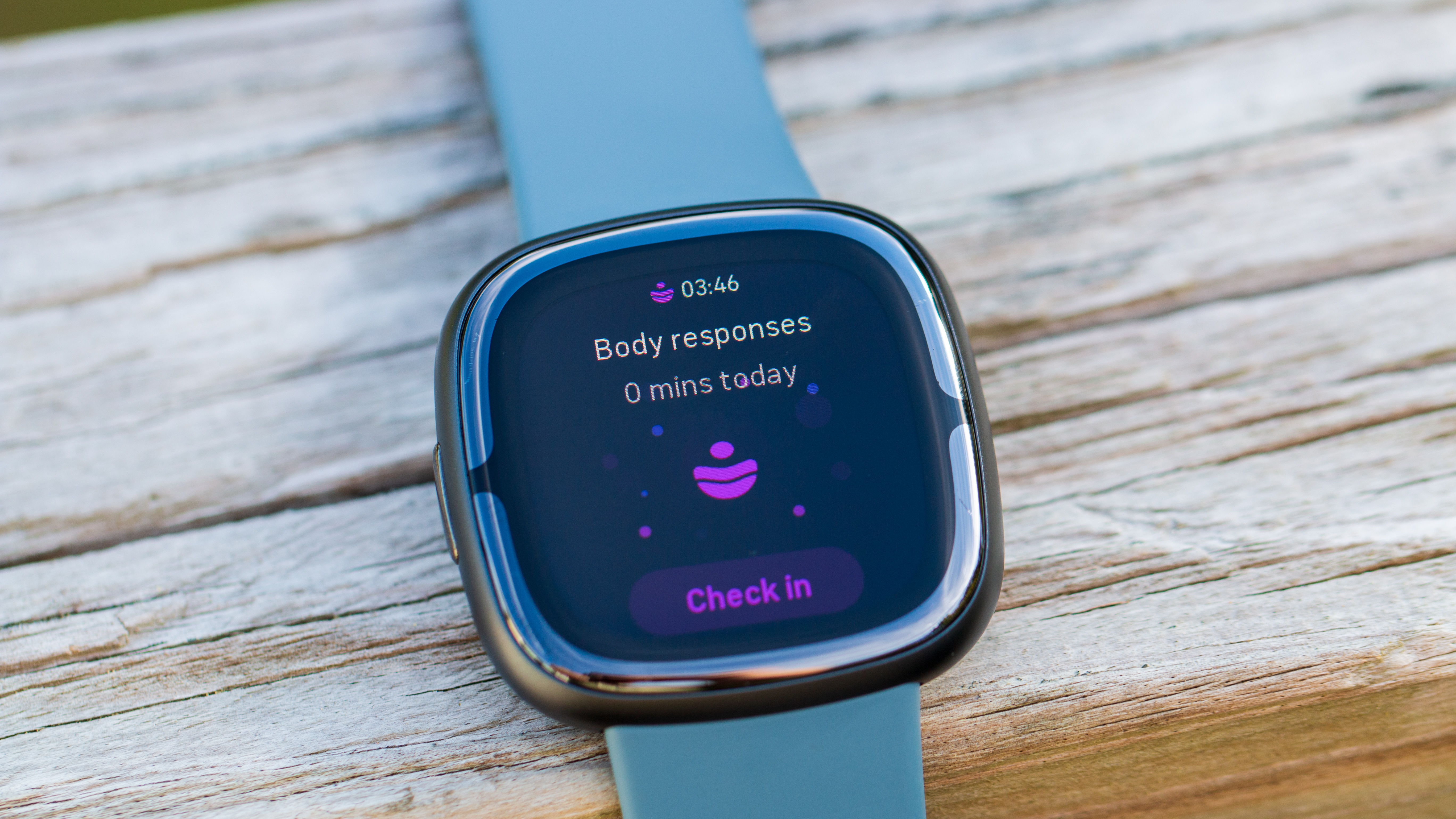
Of course, the Apple Watch SE also has very deliberate compromises. Like the Sense 2, it does have some essentials like an accelerometer and gyroscope for accurate movement tracking, an altimeter for tracked effort at elevation, ambient light to adjust the 1,000-nit brightness to surrounding conditions, and the essential heart rate monitor — though it's Apple's second-gen sensor, not the newer third-gen one in the Series 8.
Plus, it has GPS, GLONASS, GALILEO, and BeiDou; the Sense 2 lacks the latter two navigation systems, which are especially useful for tracking in Europe and China, respectively. It also has newer Bluetooth 5.3 support, Wi-Fi connectivity for faster downloads, and the option to upgrade to LTE for an extra $50.
Where does the Apple Watch SE fall short? It cuts Series 8 sensors like blood oxygen monitoring, an ECG for heart rhythm readings, and the new skin temperature sensor for health and ovulation tracking. It also lacks the Sense 2's unique cEDA sensor for constant stress-level tracking.
Apple Watch SE 2 (2022) vs. Fitbit Sense 2: Health and fitness
Of course, to access most of the Sense 2's unique sensor data, you'll need a Fitbit Premium subscription. You do at least get six months of free access when you buy one, giving you access to a variety of scores and reports: Daily Readiness, sleep score, wellness report, stress management score, and skin temperature score, among other data.
All of this data can't be accessed without paying for it, crippling the Sense 2's usefulness if you choose to unsubscribe to Premium. On the other hand, Apple doesn't really offer any kind of health data summaries in the same way, and the SE 2022 doesn't have the sensors to do so regardless. So it's a matter of perspective.
Fitbit also offers a ton of sports modes and useful metrics for keeping track of your progress over time, including timed interval workouts. And its new Fitbit OS adopts a similar UI to Wear OS 3, incorporating elements like tiles. It just lacks the Wear OS apps to do much with this system.
The Apple Watch SE 2022 uses watchOS 9, which closed the gap a bit between Apple's watches and other fitness watches. It can detect heart rate zones, running power, and running form, and allows Custom Workouts that push you to stay within a certain effort threshold while you exercise. For example, you can set it to warn you if you go above or below a certain pace or heart rate.
It also has access to Apple Fitness+ for at-home workouts, with your watch displaying your heart rate on the corner of your TV display so you see your effort without having to look away. Fitbit also has guided workouts and programs with its Premium subscription, though not with the same integration; perhaps that's something we'll see on Android TVs in the future since Google owns Fitbit.
watchOS 9 will also apparently bring mapped running routes to the Apple Watch SE in the future. The Fitbit Sense 2 is supposed to receive Google Maps sometime in the future, but it's unclear if that'll be used for workouts or just for regular navigation purposes.
Otherwise, the Apple Watch SE doesn't have quite the same software as the Series 8 — it doesn't have a QWERTY keyboard, for example — but otherwise, it's a pretty flawless software experience.
Apple Watch SE 2 (2022) vs. Fitbit Sense 2: Which should you buy?
Not counting the Pixel Watch with its Fitbit integration, the Fitbit Sense 2 is the brand's flagship option for health tracking, giving you a ton of useful and accurate data. When it comes to fitness tracking, it doesn't have much that's new compared to older or cheaper Fitbits, and despite the Wear OS-lite reskin, the Sense 2 and Versa 4 actually a less advanced software experience than the original Sense and Versa 3, mainly due to the lack of Google Assistant and music storage.
With the Apple Watch SE 2, you should continue to get most of Apple's new fitness tools and software perks for years to come. It's a stylish and lightweight watch that gives you reason to wear it for more than just checking if you're healthy or not. But its limited health sensors do mean it's not necessarily the best option for anyone with health concerns (even if it does have SOS and crash detection). And battery life is a consistent problem we hope Apple can manage to solve by the next generation.

Choose the Fitbit Sense 2 to receive the most comprehensive set of sensors besides the Galaxy Watch series, along with a stylish and bright display, 6-day battery life, and handy Premium software integration to guide you to a healthier body or faster PR. Don't buy the Sense 2 if you want Google Assistant or any of the smartwatch features like music storage or third-party apps that you'd expect from a watch at this price.

Choose the Apple Watch SE 2nd-generation if you want something relatively affordable, comfortable, and stylish that'll receive new apps and features for the next few years at least. Don't choose the SE 2022 if you want a wide range of health sensors, you hate frequently charging your watch, or you might ever switch from iPhone to Android.
Be an expert in 5 minutes
Get the latest news from Android Central, your trusted companion in the world of Android

Michael is Android Central's resident expert on wearables and fitness. Before joining Android Central, he freelanced for years at Techradar, Wareable, Windows Central, and Digital Trends. Channeling his love of running, he established himself as an expert on fitness watches, testing and reviewing models from Garmin, Fitbit, Samsung, Apple, COROS, Polar, Amazfit, Suunto, and more.
